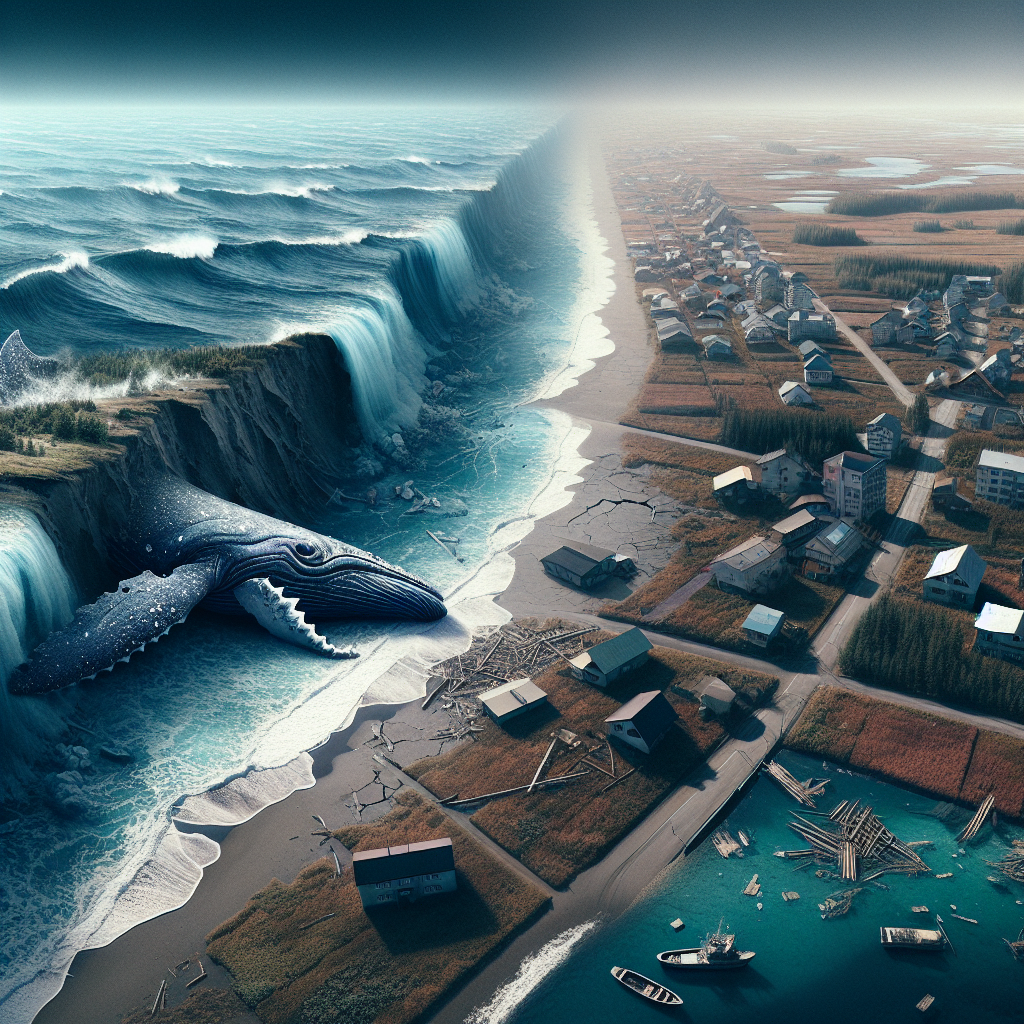Tsunami Strikes Russian and Japanese Coast Following Major Earthquake
Ports Damaged, Whales Washed Ashore: Tsunami Hits Russian and Japanese Coast After 8.8 Earthquake
A powerful earthquake measuring 8.8 on the Richter scale struck off the coast of Russia, triggering a significant tsunami that has caused extensive damage along the Russian and Japanese coasts. The earthquake, which occurred on [insert date], was felt widely across the region, leading to urgent evacuations and emergency responses.
Impact on Ports and Infrastructure
Port facilities in both countries have reported severe damage, disrupting shipping and fishing activities. In Russia, several coastal cities experienced flooding, with reports of infrastructure being overwhelmed by the tsunami waves. Similarly, Japanese ports were also affected, with some vessels capsized or damaged. Authorities are assessing the full extent of the damage, but early reports indicate significant disruptions to maritime operations.
Environmental Consequences
In addition to human and infrastructural impacts, the tsunami has led to environmental concerns, particularly with marine wildlife. Whales and other marine species have been found washed ashore, raising alarms among environmentalists and researchers. The phenomenon highlights the ecological repercussions of such natural disasters, as oceanic habitats can be severely disrupted.
Humanitarian Response
In the aftermath of the earthquake and tsunami, local authorities have mobilized disaster response teams to assist affected communities. Emergency shelters are being set up, and rescue operations are underway to locate those who may be missing. International aid organizations are also preparing to offer assistance, sending supplies and personnel to support recovery efforts.
Historical Context
This recent earthquake is one of the most powerful to hit the region in recent years, reminiscent of the devastating 2011 Tōhoku earthquake and tsunami that affected Japan. The geological characteristics of the area make it prone to seismic activity, underscoring the importance of preparedness and resilience in coastal regions.
Looking Ahead
Scientists and geologists are closely monitoring aftershocks and potential future seismic activity. Public safety officials have urged residents to remain vigilant and ready for further evacuations if necessary. The focus now shifts to recovery and rebuilding, as communities begin to assess the damage and plan for the long-term impacts of this natural disaster.
As the situation develops, updates will be provided regarding the recovery efforts and the ongoing assessments of damages along the affected coasts.
